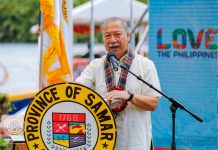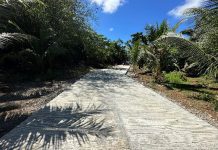PALO, Leyte- The Department of Tourism (DOT) is eyeing the accreditation of 58 farms in Eastern Visayas as tourism sites under the “It’s More Fun in Philippine Farms” campaign.
DOT-Eastern Visayas Regional Director Karina Rosa Tiopes said Tuesday (Dec.5) that there’s a huge potential for the predominantly agricultural region to develop its economy through farm tourism.
Currently, Canaan Hill Farms and Honey Garden in Caibiran town is the only accredited agri-tourism site in the region. The organic farm, situated in a seven-hectare land, is personally managed by a family of professionals.
“The development of farm tourism is not only aimed to attract visitors but also to help local farmers diversify and supplement their agriculture income. It serves as a medium to augment the business of farming,” Tiopes said during Regional Farm Tourism Consultative Workshop at the Oriental Hotel here.
The workshop aims to accredit more farms in the region to be officially listed as farm tourism sites.
Owners of agri-tourism sites aiming for accreditation need to submit to the DOT documentary requirements, which include a business permit, business name certificate and notarized list of names of all officials and employees.
Prospective farm tourism sites should be in safe and peaceful locations with roads, electricity, water; have sufficient facilities and amenities such as reception center, parking space, dining or multipurpose area, souvenir shops, accommodation and restaurants; and have trained tour guides.
The 58 potential farm tourism sites as listed by the Agriculture Training Institute are located in Javier, Merida, Bato, Alangalang, Babatngon, Baybay City, Palo, Hinunangan, Albuera, Isabel, Tacloban City, Merida, Ormoc City, Carigara, Jaro, Kananga, Mahaplag, and Capoocan, all in Leyte.
In other provinces, these farms are in Tomas Oppus, Macrohon, Bontoc, Sogod, Silago in Southern Leyte; Almeria and Caibiran in Biliran; Basey, Paranas, Sta Rita, Marabut, and Calbayog City in Samar; Lawaan, Mercedes, Quinapondan, and Borongan City in Eastern Samar; Palapag, Mondragon, and Catarman in Northern Samar.
Some cities and towns have more than one site. These farms produce rice, dairy, coconut, aquaculture, high value fruits and vegetables.
“The presence of these farm sites puts the region in a good position to develop distinct and complementing farm experiences, that can be more interesting because of unique and even heart-warming stories of the farm owners themselves,” Tiopes explained.
The government enacted Republic Act No. 10816 or the Farm Tourism Development Act on May 23, 2016, recognizing the value of farming in food productive and providing income.
The law defines farm tourism as a practice of attracting visitors and tourists to farm areas for production, educational, recreational, purposes which involves any agricultural or fishery-based operation or activity and may also provide a venue for outdoor recreation and accessible family outings.
The tourism department launched the “It’s More Fun in Philippine Farms” program on Oct. 23 recognizing that “a day in the farm is both relaxing and educational.”
Eastern Visayas region is a predominantly farming area where 45 percent or 976,415 hectares of its total land area is devoted to agriculture.
Of its agricultural lands, 70 percent is planted to coconut and 20 percent is planted to rice and corn. The rest is planted to other crops, used to raise livestock and poultry, or inland fishery products. (SARWELL Q. MENIANO/PNA)



